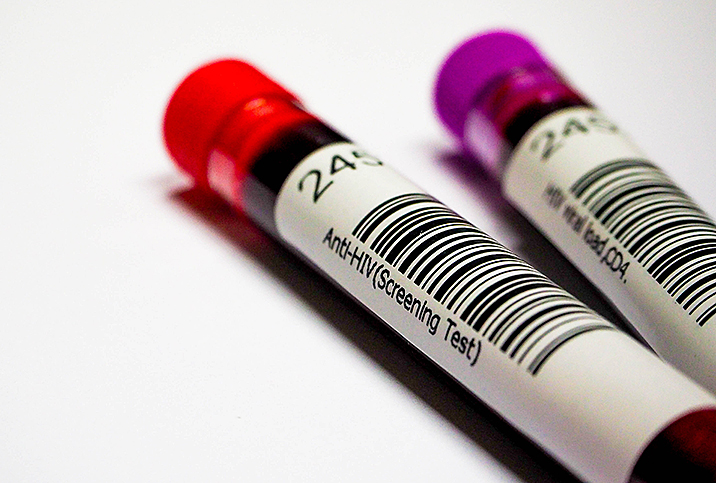What an Injectable HIV Drug Means for HIV Treatments

To live healthy lives with normal life expectancy, HIV+ people are administered antiretroviral therapy (ART), a combination of drugs that are taken as a once-daily pill. Although it’s not a cure, the treatment suppresses the virus in most people within six months, making it less likely to impact the immune system in the long term.
ART can lower viral load levels so much that HIV becomes undetectable in the blood, effectively making it intransmissible. However, this doesn’t mean a patient should stop ART. Continuing consistent treatment is a vital key to maintaining an undetectable viral load.
The future of HIV medication aims to eliminate the inconvenience and potential for human error that comes with remembering to take pills every day. In January the Food and Drug Administration (FDA) moved closer to making this a widespread reality when it approved ViiV Healthcare’s Cabenuva, a combination of cabotegravir and rilpivirine as an injectable antiretroviral formula.
The newly approved treatment is administered once a month via an injection into the gluteal muscle by a healthcare professional and is only approved for use in patients with low viral loads. It’s also approved for use in individuals who don’t have any history of treatment failure or resistance to cabotegravir or rilpivirine pills, which both work to stop HIV from replicating.
Cabenuva is approved as a suppressive therapy for HIV, but a study through HIV Prevention Trials Network suggests it’s also more effective than oral PrEP (pre-exposure prophylaxis) treatment because it leaves less room for missed doses.
PrEP, which is a daily pill that consists of a mix of tenofovir and emtricitabine drugs, is intended for use by people who do not have HIV but are considered at high risk for contracting the virus. According to medical experts, the medication makes HIV transmission extremely unlikely if taken correctly. This means injectables could also be a potential option for high-risk groups without HIV.
How do cabotegravir or rilpivirine work?
Cabotegravir is part of a group of HIV suppression drugs called integrase inhibitors. It blocks an HIV virus enzyme called integrase that puts viral genomic DNA into chromosomes. By stopping integrase from multiplying, HIV is unable to replicate.
Rilpivirine is part of the non-nucleoside reverse transcriptase inhibitors (NNRTIs) family. It works by targeting an HIV protein action called reverse transcriptase, where viral RNA (ribonucleic acid) is transformed into DNA as the virus enters cells. NNRTIs confuse this process so proviral DNA can’t be created, halting HIV replication. Preventative HIV vaccines have so far proven impossible because of RNA virus nature—they mutate exceptionally fast and vaccines would have to account for all mutations.
Safety, side effects and patient preference
Canada was first to approve the Cabenuva injectable in March 2020, including a pill form of cabotegravir. The idea is to transition people from their current treatment to Cabenuva by starting with pill forms of cabotegravir (Vocabria) and rilpivirine (Edurant) before moving to the injectable form that combines both after a month.
The FDA also approved both pills in January 2021. Starting patients on Vocabria and Edurant makes switching treatment safer. Long-acting, extended-release cabotegravir and rilpivirine can remain in your system for months. Pill formats can be stopped right away if worrisome side effects happen.
Notable side effects include reactions around the injection area, fever, fatigue, headaches, nausea, musculoskeletal pain, trouble sleeping, dizziness and rashes.
Janssen Pharmaceutical Companies of Johnson & Johnson found Cabenuva was just as effective as oral alternatives after 48 weeks. Out of 1,000 plus patients, 4 percent stopped treatment because of adverse side effects, but 90 percent said they preferred it over pills. A European survey found that HIV+ patients worry about daily pills exposing their status, missing their doses, or disliking the daily intake. The survey found that most respondents preferred and favored injectables over pills.
What other injectables are in development?
According to the National Institute of Allergy and Infectious Diseases, there’s research underway into therapeutic HIV vaccines designed to bolster immune response in HIV+ people to suppress viral loads, rather than prevent HIV altogether. Another treatment being explored— broadly neutralizing antibodies administered by IV—is also meant to stimulate an immune response, plus kill HIV infected cells and bind to the virus to stop it from entering cells.
Cabenuva has shown promise as a viable extended-release injectable for HIV and is likely to have a global impact, having been approved in Europe in December 2020, too. The future of injectables in science will only continue to expand with innovative technologies from all antiretroviral, vaccine and antibody angles.
















